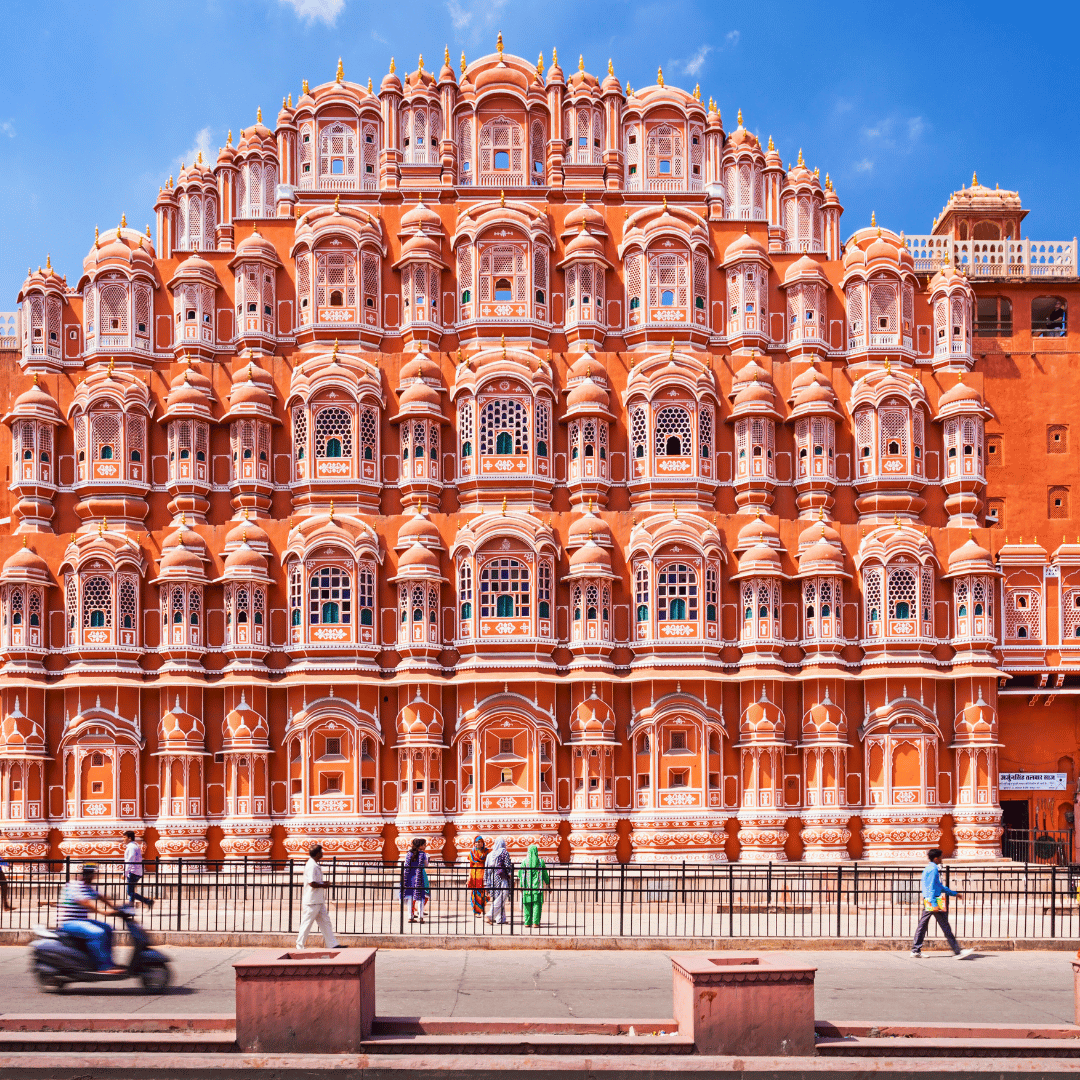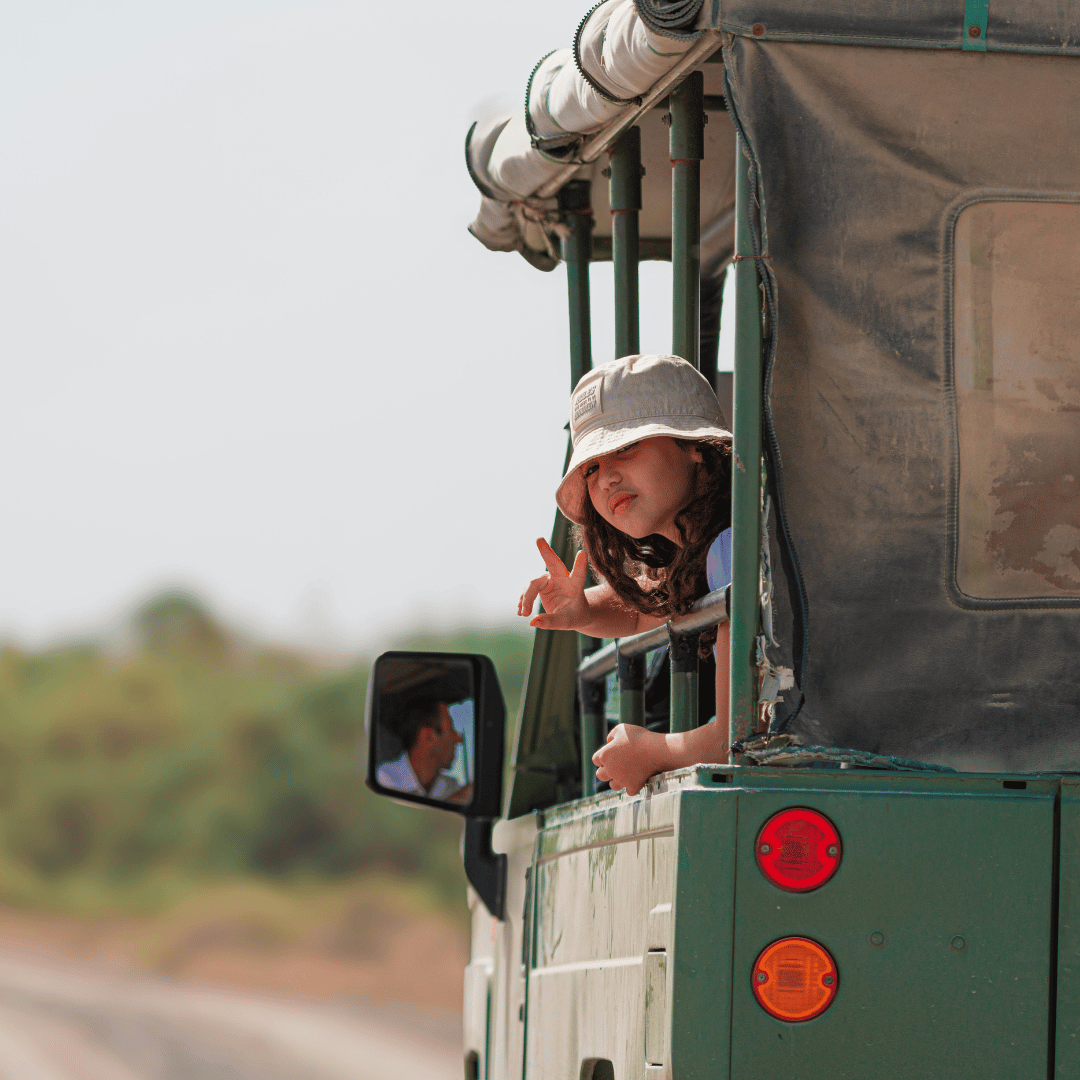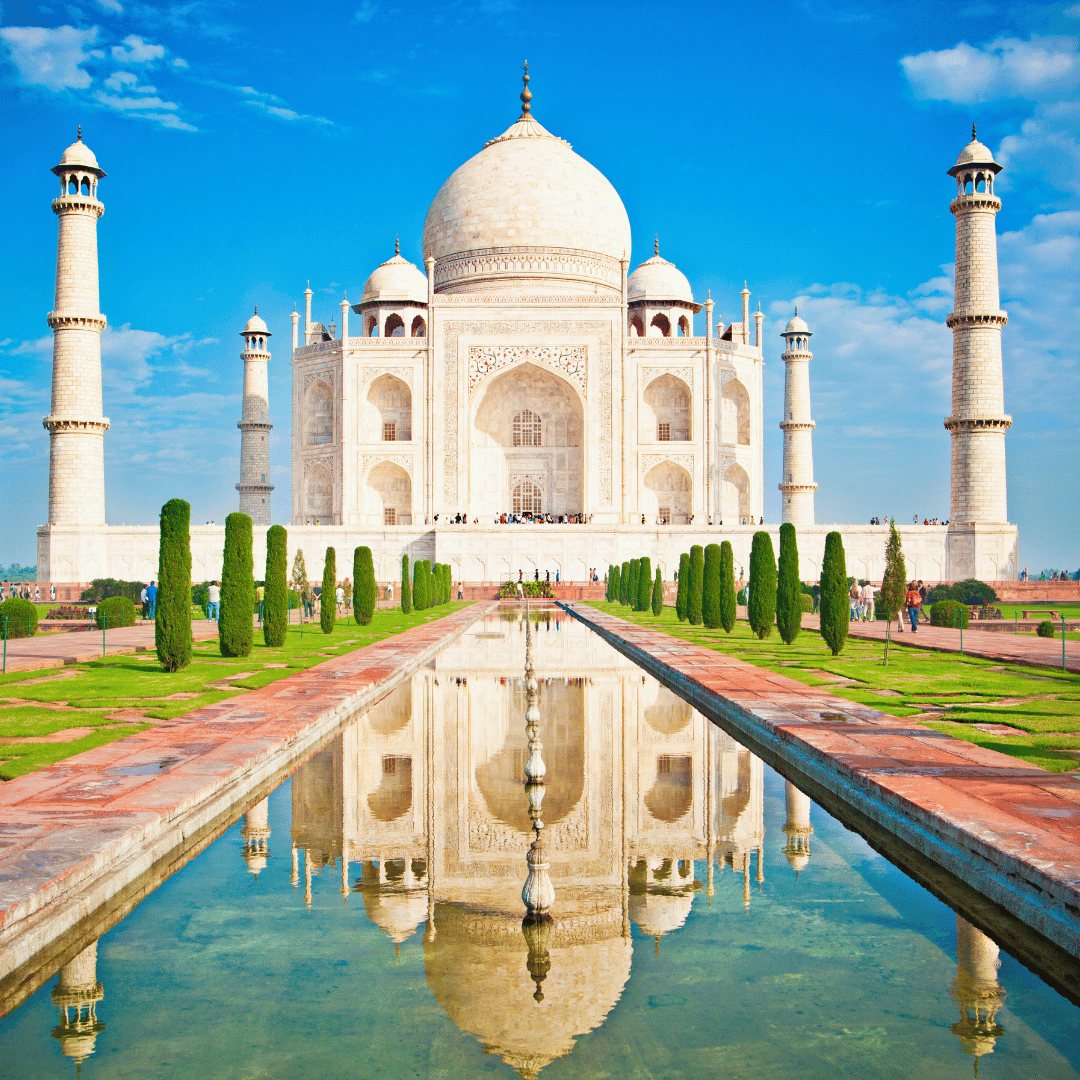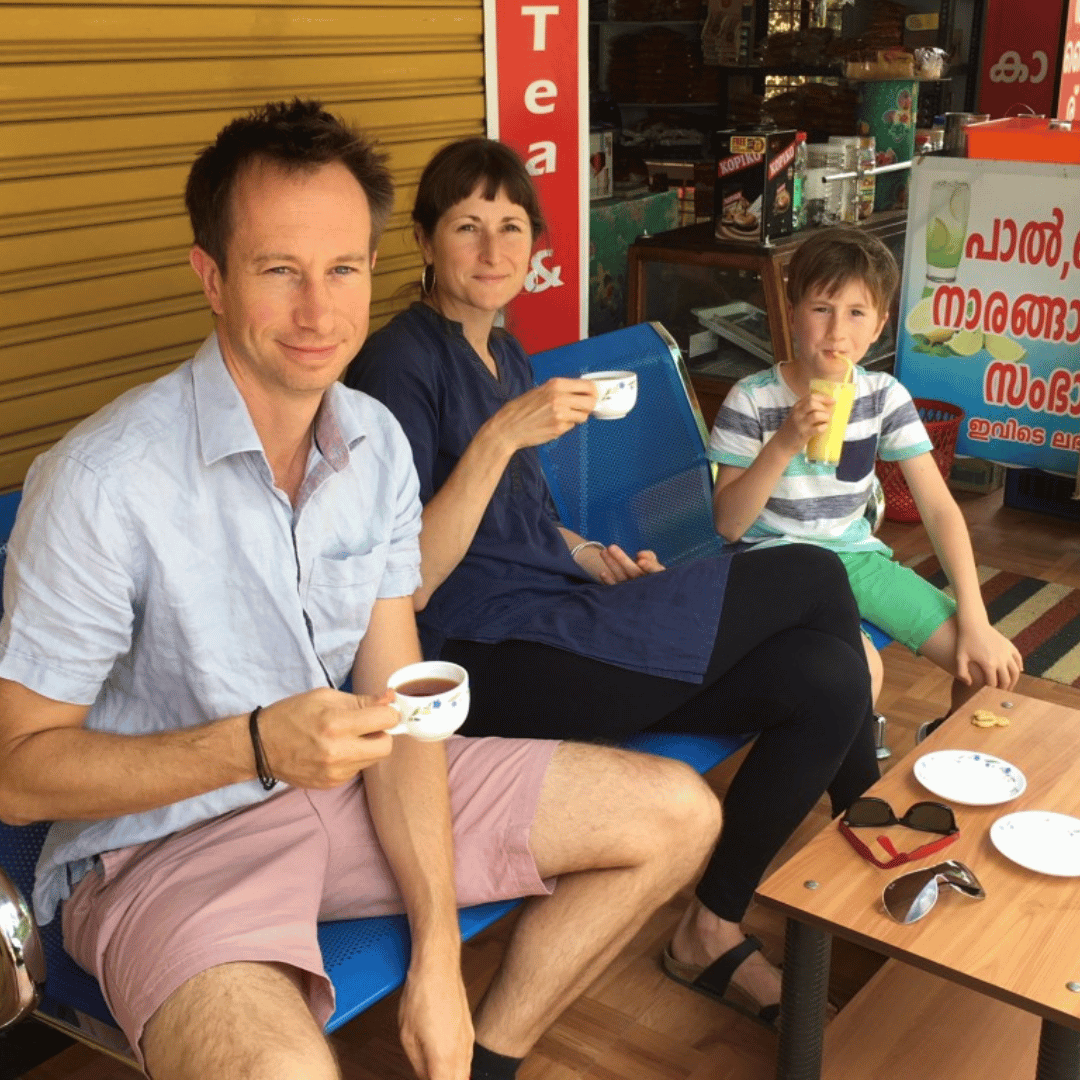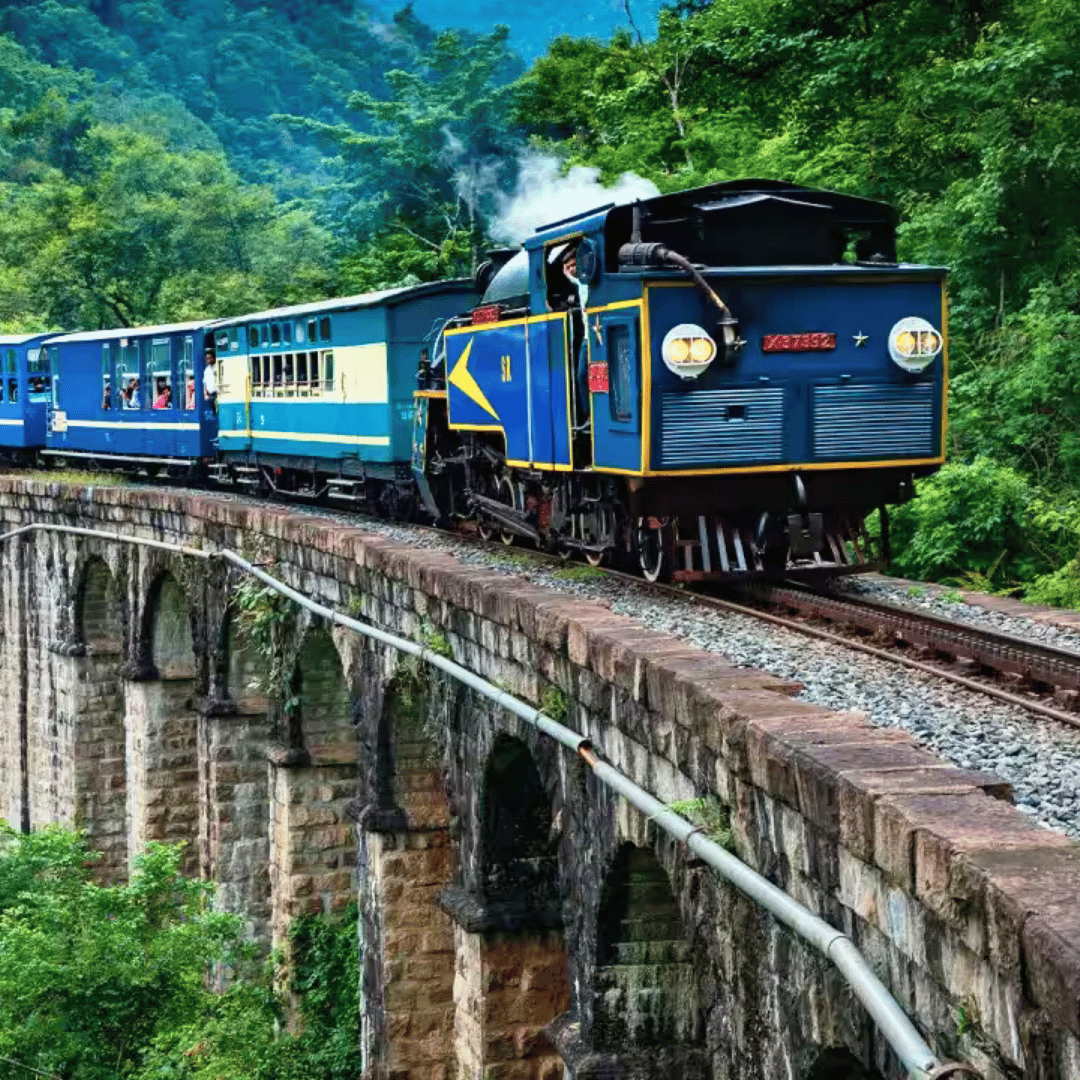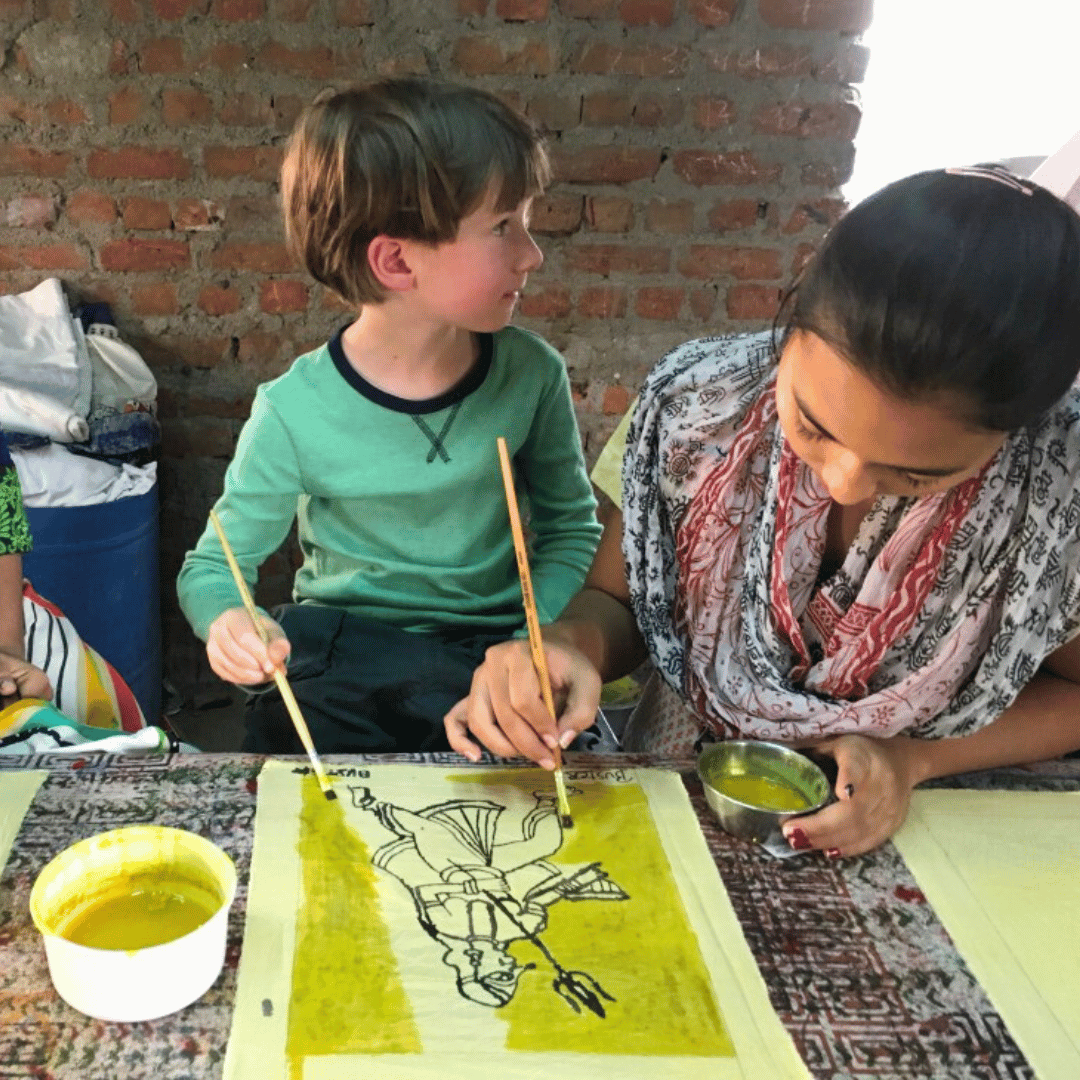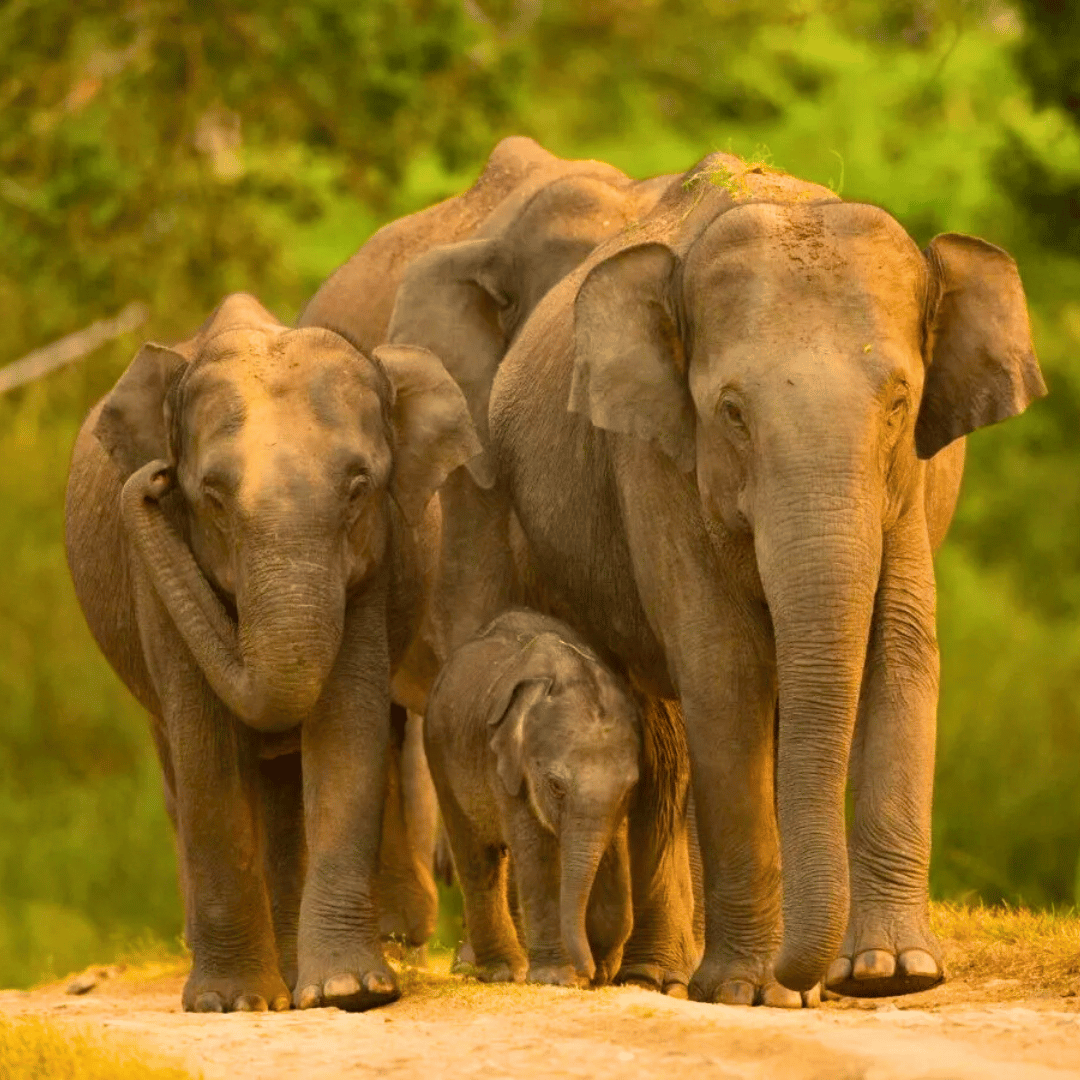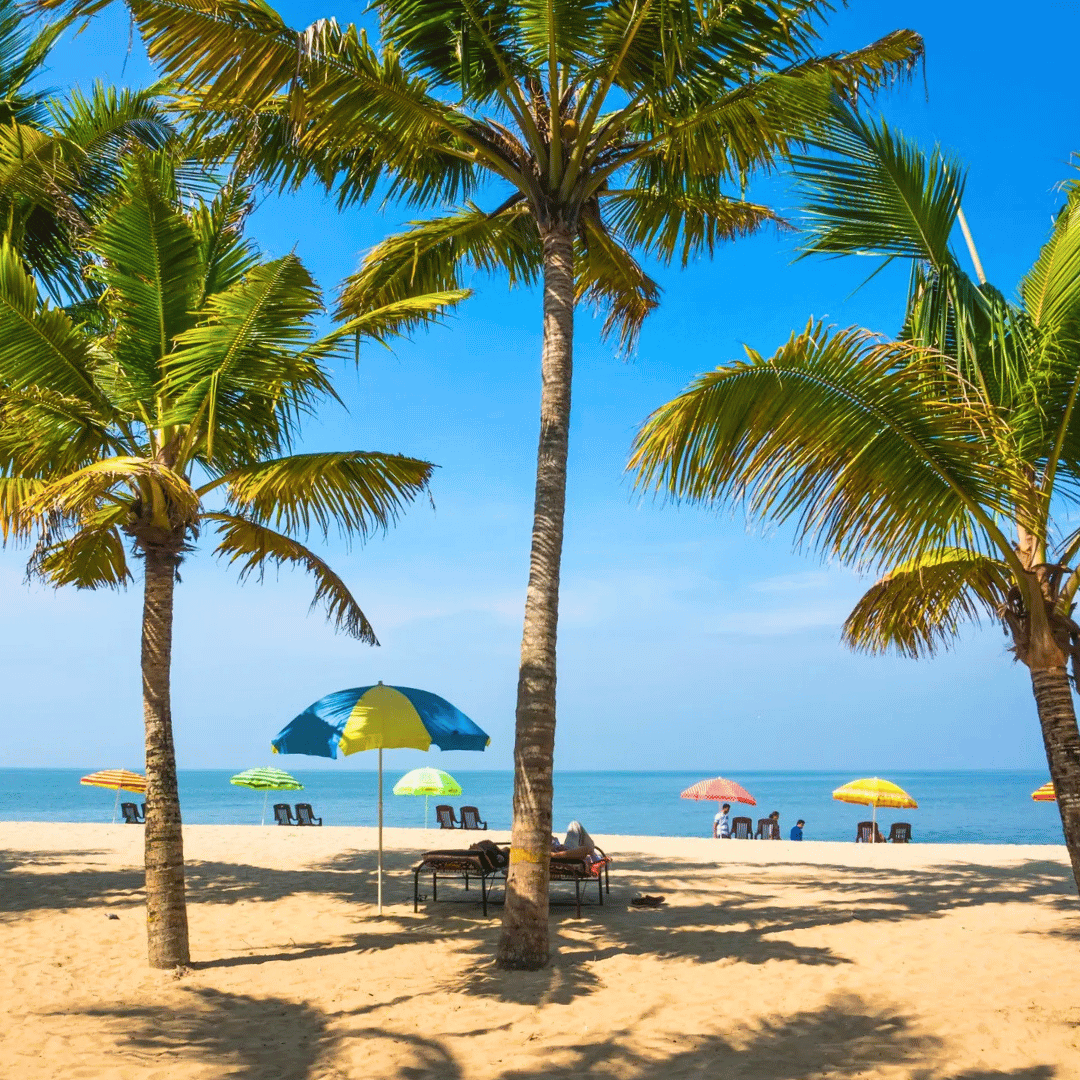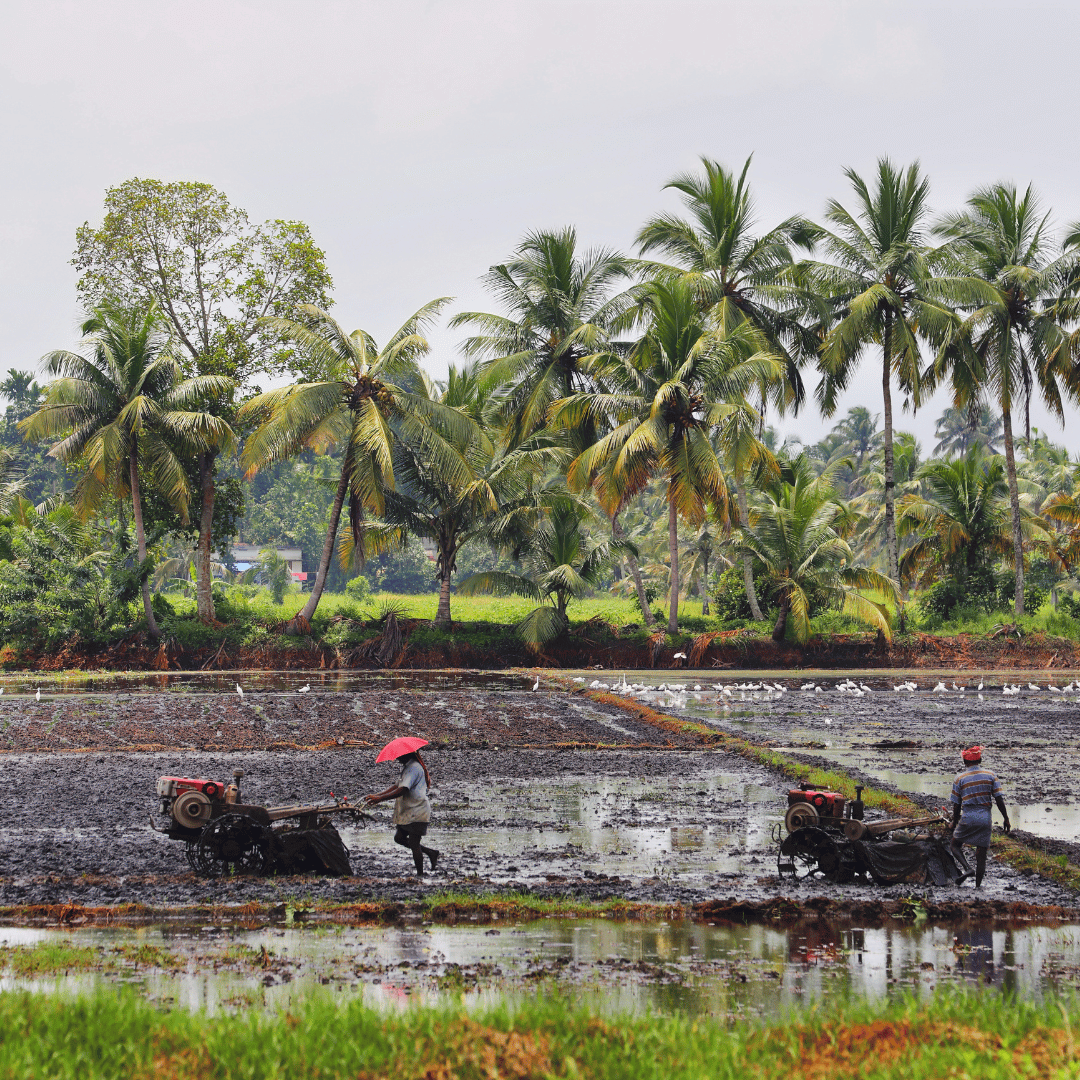North India Family Explorer Tour Itinerary
-
Welcome to India! Upon arrival at Delhi Airport, you will be met, warmly welcomed, and transferred to your hotel.
Delhi, a city where history and modernity coexist, is divided into two distinct parts - Old Delhi, steeped in Mughal heritage, and New Delhi, the seat of India’s government and a showcase of colonial and contemporary architecture.
Old Delhi, founded in the 17th century by Mughal Emperor Shah Jahan, retains much of its medieval charm, with narrow winding lanes, bustling markets, centuries-old mosques, and vibrant street life. Its atmosphere is reminiscent of the bustling old towns of the Middle East, filled with the aroma of spices, sizzling street food, and the echoes of traders and rickshaw bells.
In contrast, New Delhi, designed in part by British architect Edwin Lutyens, features broad boulevards, grand colonial buildings, and expansive green spaces. While the area around the Parliament House and Rashtrapati Bhavan (Presidential Palace) retains its British-era grandeur, much of the city has evolved into a modern metropolis, with high-rise buildings, luxury hotels, and sprawling shopping complexes. Together, these two sides of Delhi offer a rich blend of heritage and modernity, making it a captivating introduction to India.
-
This morning, begin your exploration in Old Delhi, where history comes alive in its narrow alleyways, bustling markets, and centuries-old traditions. Visit the Jama Masjid, one of India’s largest mosques, built in 1656 by Mughal Emperor Shah Jahan. Its grand red sandstone and white marble domes, towering minarets, and expansive courtyard provide a stunning introduction to Mughal architecture.
From here, take a walking tour through the traditional businesses of Old Delhi, where artisans have been practising their crafts for generations, some tracing their lineage back to the 6th or 7th generation of their family trade. Step into a charming old-world perfumery, where you can test fragrant Indian attars (perfumes) from delicate cut-glass bottles, a practice that has remained unchanged for centuries.
Continue through the vibrant Kinari Bazaar, the city’s famed bridal market, where shopfronts overflow with intricately embroidered silk wedding saris, dazzling bangles, and colourful turbans for bridegrooms. Then, visit Khari Baoli, Asia’s largest spice market, where traders have dealt in spices, lentils, dried fruits, nuts, and saffron for over 150 years. The heady aromas of cumin, cardamom, and cinnamon will linger long after you leave this fascinating marketplace.
In the afternoon, shift to New Delhi, where colonial grandeur and Mughal heritage blend seamlessly. Visit Humayun’s Tomb, a masterpiece of Mughal architecture built in 1565-66. Set in a geometric Persian-style garden, this magnificent red sandstone and marble mausoleum served as an architectural model for the Taj Mahal.
Next, explore Qutab Minar, a 73-metre-high victory tower, one of Delhi’s most striking landmarks. Built in the 12th century, this towering structure has five intricately carved storeys, each adorned with ornate balconies and Quranic inscriptions. Nearby, the Iron Pillar, dating back to the 4th–5th century AD, continues to intrigue visitors for its remarkable resistance to rust over the centuries.
Finish the day with a drive through Lutyens’ Delhi, designed in the early 20th century by British architect Edwin Lutyens. Admire the grand India Gate, a war memorial dedicated to Indian soldiers, and drive past the Rashtrapati Bhavan (President’s House) and Parliament House, striking examples of colonial-era architecture that still serve as the seat of India’s government today.
-
This morning, you will be met at your hotel for the four-hour drive to Agra. On arrival, check in to your hotel and take some time to settle in before exploring this historic city.
Agra has a fascinating and often ruthless royal past, reaching its peak during the Mughal era in the 16th century. Once known as Akbarabad, the city was named after Emperor Akbar, who established it as a centre for learning, the arts, commerce, and religion. Agra remained the capital of the Mughal Empire under three of its most powerful rulers - Akbar, Jahangir, and Shah Jahan - all of whom left behind an extraordinary architectural legacy. The city is home to some of the most impressive Mughal-era structures, including the UNESCO-listed Taj Mahal and Agra Fort, which offer a glimpse into the grandeur and opulence of the empire’s golden age.
This afternoon, visit the majestic Agra Fort, a powerful red sandstone fortress that played a key role in Mughal history. Many of the events that led to the creation of the Taj Mahal unfolded within its walls. Construction began in 1565 under Emperor Akbar, with 4,000 builders working daily for eight years to complete its first phase in 1573 - though expansions continued until the reign of his grandson, Shah Jahan. Spanning 2.5km, the fort’s imposing exterior conceals an interior of remarkable beauty, blending Hindu and Islamic architectural styles. Within its walls, explore graceful courtyards, fountains, water channels, and floral gardens, as well as two exquisite white marble mosques - the Moti Masjid (Pearl Mosque) and the Nagina Masjid (Jewel Mosque). The fort is also home to several magnificent palaces, including the Sheesh Mahal and the Musamman Burj, where Shah Jahan was imprisoned by his son in the final years of his life. From this octagonal tower, he had a heartbreaking view of the Taj Mahal, the monument he built in memory of his wife.
Later, visit Mehtab Bagh, the last of the Mughal gardens built along the Yamuna River. This crescent-shaped garden is considered the best spot to view the Taj Mahal, offering a breathtaking perspective of the monument as the sun sets, reflecting its soft hues on the marble façade.
-
It's an early start today as you set out to witness the Taj Mahal at sunrise, when the soft morning light casts a magical glow over its marble façade. Often described as a ‘tear on the face of eternity’, this enduring symbol of love is a masterpiece of Mughal architecture, blending grandeur with intricate craftsmanship. Commissioned by Mughal Emperor Shah Jahan in memory of his beloved wife, Mumtaz Mahal, the Taj Mahal complex took 22 years to complete and is now recognised as one of the Seven Wonders of the World. Watching it change colour as the sun rises over the Yamuna River is an unforgettable experience. After taking in the beauty of this remarkable monument, return to your hotel for breakfast.
Afterwards, depart for the four-hour drive to Karauli, a hidden gem in Rajasthan, far from the usual tourist trail. On arrival, check in to your hotel, and enjoy a leisurely afternoon exploring at your own pace.
Karauli is a small, atmospheric town known for its colourful bazaars, where you can browse traditional handicrafts, fabrics, and everyday local wares. One of its most fascinating landmarks is the Karauli City Palace, a treasure trove of Rajput architecture, featuring intricate stone carvings, delicate jali work, and vibrant frescoes. The palace’s adjoining temple is one of Rajasthan’s most mesmerising ‘living temples’, where local villagers gather each evening to sing and dance in devotional praise of Lord Krishna. Witnessing this joyful and deeply spiritual celebration offers a truly authentic glimpse into Rajasthan’s cultural and religious traditions.
-
Today is yours to spend at leisure, with a range of optional local activities available through your hotel. Depending on your interests, you may choose from yoga, massage, horse riding, boat rides, cycling, trekking, or bird watching, all offering a chance to experience Karauli’s natural beauty and cultural heritage at your own pace.
For an early morning adventure, consider a jeep safari to Kaila Devi Game Sanctuary, a scenic wildlife reserve known for its rolling landscapes and diverse animal species. Along the way, stop at the Kaila Devi Temple, an important Hindu pilgrimage site, where devotees gather to offer prayers. Alternatively, take a leisurely stroll through the nearby village, where you can explore handicraft shops selling traditional lacquer work, colourful bangles, wooden toys, bamboo crafts, and locally made sweets.
A visit to the City Palace is also highly recommended. Though in need of some restoration, this once-magnificent royal residence still retains impressive architectural features, including intricately carved stonework and stunning wall paintings in the Durbar Hall. In the evening, you may like to witness the Aarti ritual at the Krishna temple, located within the Bhanwar Vilas Palace grounds. This spiritual ceremony, filled with chanting, bells, and oil lamps, is a mesmerising experience.
End the day with a special cooking demonstration at the palace, where you’ll learn about traditional Rajasthani cuisine, followed by a delicious dinner, offering a taste of the region’s authentic flavours.
-
This morning, set off on the four-hour journey to Ranthambhore National Park, one of India’s premier wildlife reserves. On arrival, check in to your hotel and take some time to settle in before your first wildlife experience.
Once the private hunting ground of the Maharajas of Jaipur, Ranthambhore was a royal retreat where grand hunting parties were held. Today, it is renowned for its thriving tiger population and is considered one of the best places in India to see Bengal tigers in the wild. The park’s rich history is reflected in its picturesque ruins, which add to its unique charm. Scattered throughout the landscape are ancient lake palaces, cenotaphs, and weathered fortifications, with the thousand-year-old Ranthambhore Fort standing high above the park, offering sweeping views of the surrounding wilderness.
Later, embark on an afternoon jeep safari into the heart of the National Park, guided by a Naturalist. Travelling in an open jeep, keep an eye out for tigers prowling through the undergrowth. The park is also home to an impressive array of birdlife, from soaring eagles to vibrant kingfishers. Each safari lasts three hours, providing an unforgettable opportunity to experience India’s wild landscapes and diverse wildlife up close.
-
Beyond its famous tigers, Ranthambhore National Park is home to a diverse range of wildlife, including leopards, hyenas, jackals, jungle cats, and sloth bears. The park’s wetlands and lakes support a variety of reptiles, such as marsh crocodiles, while its rich birdlife makes it a haven for birdwatchers. Among the many species spotted along the water bodies are Jacanas, painted storks, black storks, and white-necked storks. The park is also teeming with peafowl, and keen birders may spot Bonelli’s eagle, the crested serpent eagle, the great Indian horned owl, quails, partridges, spurfowls, and the striking paradise flycatcher.
For those interested in birdwatching, the grounds around your accommodation offer excellent opportunities to observe local and migratory species. Hotel staff are available to assist, and some properties provide binoculars and field guides to enhance the experience.
Between your early morning and late afternoon jeep safaris, enjoy some leisure time at your hotel, taking in the peaceful natural surroundings or simply relaxing after your wildlife adventures.
-
This morning, depart Ranthambhore for Jaipur, a journey of approximately four hours. On arrival, check in to your hotel and take some time to settle in before beginning your exploration of Rajasthan’s vibrant capital.
Nicknamed the "Pink City", Jaipur is famed for the distinctive pink hue of its old walled town, a tradition that dates back to 1876, when the buildings were painted to welcome Prince Albert, consort of Queen Victoria. The city is steeped in history and culture, where grand forts and opulent palaces, once home to Maharajas and nobles, still stand as a testament to its royal heritage. Jaipur is also widely regarded as the first modern planned city in the world, designed in 1727 by Maharaja Sawai Jai Singh II, following principles of Vastu Shastra (traditional Indian architecture). Even today, its well-organised grid layout and architectural brilliance continue to impress urban planners and architects alike.
In the evening, set out on a guided walking tour of Old Jaipur, immersing yourself in its bustling bazaars, traditional crafts, and rich culinary heritage. Since its founding, Jaipur’s royal families and nobles have patronised skilled artisans, ensuring the city’s craft traditions remain alive. Today, Jaipur is widely considered India’s craft capital, where age-old techniques are still used to create highly prized textiles, jewellery, and decorative arts.
As you wander through Ghat Darwaza and Vishveshwar Ji, watch skilled artisans at work - from jewellers and silversmiths to gold painters, tie-dye experts, and meenakari (enamel work) and kundan (gem-setting) artists. Along the way, stop to sample some of Jaipur’s famous street food from well-known vendors. Try crispy pakoras, spicy aloo tiki, savoury samosas, and sweet ladoos, all showcasing the region’s diverse flavours.
Midway through the walk, visit a private haveli, a beautifully preserved traditional mansion adorned with gold-painted walls, rich tapestries, antique carpets, and rare artefacts. This unique opportunity provides a glimpse into the grandeur of Jaipur’s historic residences.
End the tour at Tripolia Gate, where you can soak up the energy of Jaipur’s colourful bazaars, filled with vibrant fabrics, handcrafted jewellery, and bustling market stalls, making for a memorable introduction to the city’s timeless charm.
-
This morning, explore the Pink City of Jaipur from a unique perspective in a custom-designed, eco-friendly pink rickshaw. This innovative initiative, run by a not-for-profit organisation, provides an opportunity to interact with your female driver, support women from low-income households, and experience the city in an authentic way. Ride through Jaipur’s quiet morning streets, feeling the cool air as the city slowly awakens.
Your first stop is the Govind Devji Temple, located within the City Palace complex. Here, witness the morning aarti, a traditional Hindu prayer ceremony, where worshippers gather to chant in unison, creating a deeply spiritual atmosphere. This 18th-century Krishna temple is considered one of the most sacred in Jaipur, revered by both the royal family and local devotees.
Next, visit the wholesale flower market near Hawa Mahal, where traders in colourful turbans negotiate sacks full of fragrant roses and marigolds. The vibrant energy of the market, with its bustling crowds and bright blooms, offers a glimpse into Jaipur’s daily life.
Continue to Hawa Mahal, or the Palace of Winds, one of Jaipur’s most iconic landmarks. Built in 1799, this five-storey structure is designed with intricately latticed windows, allowing the women of the royal household to observe the streets below without being seen. Its delicate facade, inspired by Lord Krishna’s crown, is a masterpiece of Rajput architecture.
Stop for a traditional Rajasthani chai at a local chaiwala on Chaura Raasta, where you can sip cardamom-infused tea served in a kullad (clay cup), a local specialty. Then, pause at Albert Hall Museum, a stunning example of Indo-Saracenic architecture, located in the centre of Ram Niwas Garden, for a quick photo before returning to your hotel for breakfast.
Later, set out to explore Jaipur’s most historic sites, including the City Palace, Jantar Mantar, and Hawa Mahal.
Founded in 1727, the City Palace has been the residence of Jaipur’s rulers for centuries. More than just a royal home, it was a centre for politics, court ceremonies, religious rituals, and artistic patronage, supporting music, literature, dance, and painting. The sprawling complex features grand courtyards, arched gateways, balconies, cupolas, and Mughal-style gardens, blending Rajput and Mughal architectural influences. Its museum houses an extensive collection of miniature paintings, textiles, royal garments, manuscripts, carpets, palanquins, and weaponry, some dating back to the 15th century.
Jaipur’s Jantar Mantar, built in 1728 by Maharaja Sawai Jai Singh II, reflects the ruler’s passion for astronomy and scientific advancement. It is the largest and best-preserved of the five astronomical observatories he constructed across India, featuring unique geometric structures designed for precise astronomical measurements. Among its highlights is the Samrat Yantra, the world’s largest sundial, standing 27 metres tall, and the Hindu Chhatri, a small dome-shaped structure used to announce eclipses and the arrival of monsoons.
End the tour at Hawa Mahal, one of Jaipur’s most striking landmarks. Built in 1799 by Maharaja Sawai Pratap Singh, it was designed as a screened viewing gallery for the women of the royal household, allowing them to observe the city’s bustling streets without being seen. Its pyramid-shaped facade, adorned with 953 intricately carved windows (jharokhas), is a stunning example of Rajputana architecture. From a distance, the palace’s distinctive design resembles the crown of Lord Krishna, reflecting the spiritual and artistic influences that shaped Jaipur’s royal heritage.
-
This morning, visit Amber Fort, one of India’s most captivating forts and the former capital of Jaipur State. Construction began in the 16th century, with successive rulers adding to its grandeur over the years. Set atop a rugged hill, the fort boasts stunning architecture, intricate carvings, and sweeping views of Maota Lake. Inside, explore the Palace of Mirrors, where millions of tiny glistening mirrors reflect even the faintest light, creating a dazzling effect. Wander through the Hall of Public Audience, once used by rulers to address their subjects, and take in the beautifully manicured gardens, which provide a tranquil contrast to the fort’s imposing walls.
After your visit, drive to Dera Amer, located on the outskirts of Jaipur. Surrounded by untouched wilderness, this eco-friendly retreat offers a glimpse into rural Rajasthani life, far removed from the bustle of the city. With a focus on sustainability, social responsibility, animal welfare, organic farming, and water conservation, Dera Amer has evolved over 30 years into a sanctuary for both domestic and wild animals.
Here, experience ethical elephant interactions with their three adopted and rehabilitated elephants, who now live in a natural environment instead of Jaipur’s busy streets. Spend time bathing, feeding, or walking alongside these gentle giants, guided by their Mahouts (traditional caretakers). Dera Amer follows a strict no-riding policy, ensuring that all activities take place on foot, allowing visitors to engage with the elephants in a respectful and cruelty-free manner.
The rest of the afternoon is yours to enjoy at leisure. You may wish to explore Jaipur’s bustling bazaars, browsing for handcrafted textiles, jewellery, pottery, and other traditional Rajasthani crafts, for which the city is renowned. With your vehicle and driver at your disposal, you can make the most of Jaipur’s vibrant markets and artisan workshops.
-
Enjoy a leisurely morning, with time to relax or explore at your own pace before checking out of your hotel at midday.
Later in the afternoon, you will be met at your hotel and transferred to Jaipur Railway Station to board a fast evening train to Delhi. Sit back and enjoy the journey as you travel through Rajasthan’s changing landscapes, arriving in Delhi later in the evening.
On arrival, you will be met at the railway station and transferred to your hotel for the night.
-
Today, you will be met at your hotel and transferred to Delhi international airport to connect with your departure flight. Your hotel check out is at midday, so guests are encouraged to rest if their departing flight time allows it.
The India Unbound Difference
At India Unbound, we’ve spent twenty years on the ground in India, learning all about its intricacies, landscapes and cultures. We use this first-hand knowledge to carefully curate travel itineraries for our guests, and are proud to be a reputable private touring specialist. In addition, our team of local partners offer guarantees of punctuality, quality and service. All of our India private tour itineraries include all accommodation mentioned, daily breakfasts and other meals as specified, all transfers, touring and sightseeing by air-conditioned Toyota Innova or similar vehicle, and internal flights as outlined in the itinerary. Private activities and sightseeing with English-speaking local guides are included, along with entrance fees, drinking water in the vehicle, and all vehicle-related charges such as tolls, parking fees, and taxes. The cost does not include visas or international flights, personal expenses such as drinks and laundry, meals and activities not specifically listed as included, or camera fees, which are rarely applicable. Prices are listed in Australian dollars and are based on per person, twin share unless otherwise specified. Please note that these may fluctuate depending on the time of year you’re looking to travel, and the type of accommodation you prefer.

